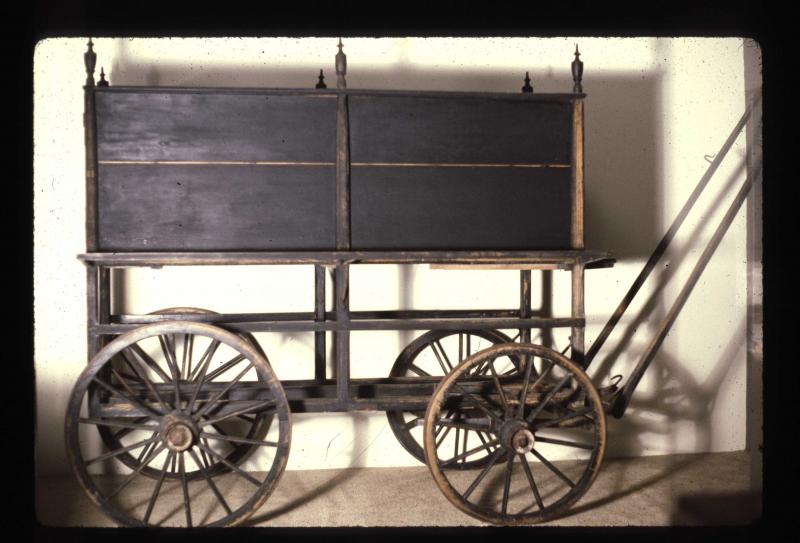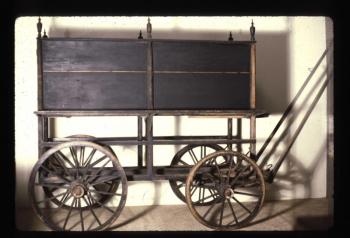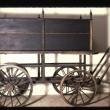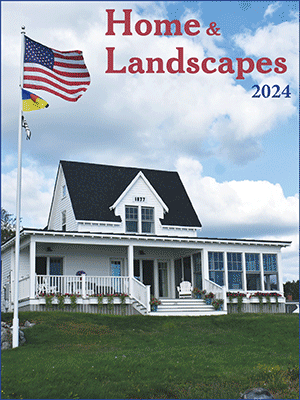Alna hearse makes history
 This circa 1800 horse-drawn hearse wagon spent an unknown length of time in a cemetery shed in Alna. The town bought it used in 1820. Courtesy of the Maine State Museum.
This circa 1800 horse-drawn hearse wagon spent an unknown length of time in a cemetery shed in Alna. The town bought it used in 1820. Courtesy of the Maine State Museum.
 This circa 1800 horse-drawn hearse wagon spent an unknown length of time in a cemetery shed in Alna. The town bought it used in 1820. Courtesy of the Maine State Museum.
This circa 1800 horse-drawn hearse wagon spent an unknown length of time in a cemetery shed in Alna. The town bought it used in 1820. Courtesy of the Maine State Museum.
You never know what an old wooden shed might hold, especially one around Lincoln County.
Thanks in part to one in Alna, and a farmer's forethought years ago, a piece of local history has lasted long enough to take on national significance.
While Maynard Albee's son Everett “Tom” Albee was growing up on the family's Route 218 farm, he would see the shed on the grounds of the Alna Cemetery next door.
Back then, Tom Albee, now 74, had no clue what was in the shed.
Decades later, his father told him it housed a horse-drawn hearse. The Alna Cemetery Association bought it used in 1820, according to the Maine State Museum.
The association loaned the museum the hearse in 1979. Maynard Albee convinced association trustees to do it to save the wooden hearse from ruin in the aging shed, his son said.
“I know he was quite pleased to do it. He did all the footwork,” Albee said of his father's work to make the loan happen.
The hearse has been at the museum ever since, in storage whenever it wasn't on exhibit.
It's now believed to be the oldest American-made horse-drawn hearse at any museum in the U.S., the museum's curator of historic collections, Kate McBrien, said.
“It's very significant,” McBrien said August 1. “And it's a very cool piece. The Maine State Museum is just thrilled to have it.”
The museum has it for keeps now.
In July, 10 years after Maynard Albee died at 93, the cemetery association's three trustees including his son, signed ownership of the hearse over to the museum.
Fellow trustee and Alna Fire Chief Mike Trask informed selectmen of the sign-over at the board's July 25 meeting. Bringing the wagon back to town would have required construction of a new building to properly house it, Trask said.
McBrien had written the association and informed them the museum no longer does indefinite loans like Alna's, 34 years long and counting.
Those open-ended loans can be problematic, Maine State Museum Director Bernard Fishman said August 1. For the past year, the museum has been systematically going through its collections to clean up those loose ends, he said.
“We're very pleased with this outcome,” Fishman said about the Alna wagon.
The hearse's stake in history is another example of Alna's proclivity for preserving its past. The 1789 Alna Meetinghouse just north of the cemetery and the 1796 Center School, also on Route 218, are on the National Register of Historic Places; so is the Head Tide District, featuring the hilltop, 1838 Head Tide Church; and Alna has passed on occasional overtures in recent years to alter the Head Tide Dam that once powered a lumber mill.
It's not known when Alna last used the hearse, or where or exactly when it was built. However, the style and some of the construction techniques distinguish the item as American, circa 1800, McBrien said.
Finials top the corners of the black-painted wooden hearse, with a canvas rollback top. It also has brackets for draping cloth and keeping the cloth away from the wheels, McBrien said.
When motorized vehicles came along, most towns sold their horse-drawn hearses, reused them as wagons, or left them to rot, McBrien said. Tucked away under cover, Alna's hearse held up.
“It's in really lovely condition,” the curator said. “Obviously, Alna had taken good care of it.”
The farm next to the cemetery is Tom Albee's now.
That shed in the cemetery is gone, torn down about a year ago due to deterioration, he said.
The hearse it protected for so long will not only go on, but be able to be better preserved now than in the decades it was a loaner to the museum.
Ownership permits the museum to use conservation funds on it that can't be used for borrowed items, McBrien said.
Albee is pleased that the wagon he didn't know he grew up next door to will now be preserved and enjoyed.
“I think it's absolutely wonderful,” he said.
Susan Johns can be reached at 207-844-4633 or susanjohns@wiscassetnewspaper.com
Event Date
Address
United States






















